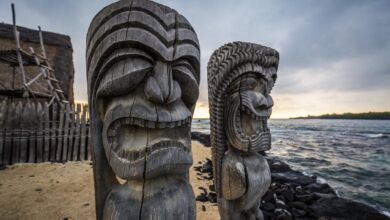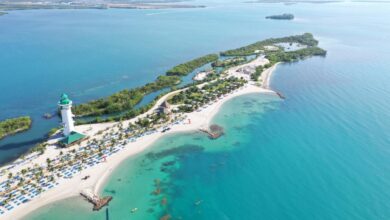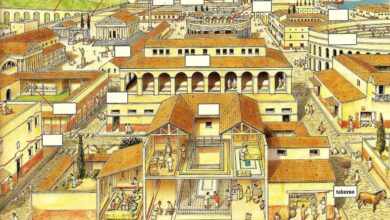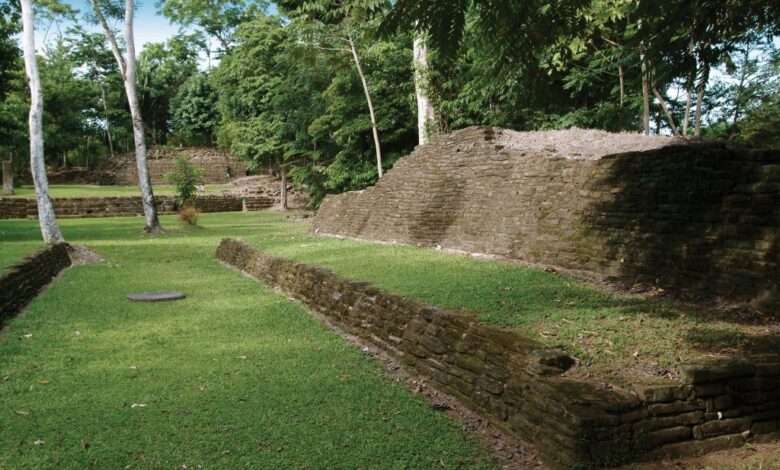
Belize Investigating Mayan Ruin Destruction
Belize investigating the bulldozing of Mayan ruins. This incident has sent shockwaves through the archaeological community, prompting a thorough investigation into the destruction of significant historical sites. The affected sites hold immense cultural and historical value, and the swift action of the Belizean government is crucial to understanding the motivations behind this act of vandalism and preserving the remnants of this ancient civilization.
This investigation will delve into the background of the incident, examining the historical context of the Mayan ruins, the procedures involved in the investigation, the evidence collected and analyzed, and the potential consequences and impacts. Furthermore, it will explore community response, international relations, and the crucial visual representation of the site before and after the bulldozing.
Background of the Incident
The bulldozing of Mayan ruins in Belize is a deeply concerning event that highlights the urgent need for stronger protections for archaeological sites. This act of destruction not only jeopardizes invaluable historical records but also erodes the cultural heritage of the Mayan people. Understanding the context surrounding this incident requires delving into the history of Mayan sites in Belize, the legal framework governing these sites, and the potential motivations behind such a devastating act.The Mayan civilization flourished in the region for centuries, leaving behind a rich tapestry of intricate architecture, monumental structures, and complex social systems.
Belize, in particular, boasts a significant presence of Mayan sites, with numerous ancient cities and settlements scattered throughout the country. These sites are not simply remnants of the past; they are living testaments to a civilization that continues to hold cultural significance for present-day Mayan communities.
Historical Overview of Mayan Ruins in Belize
The Mayan civilization in Belize encompasses a vast timeline, with evidence of settlements dating back thousands of years. Numerous sites, including Caracol, Xunantunich, and Altun Ha, stand as remarkable examples of Mayan artistry and engineering. These sites were not just centers of political power; they also served as vital religious and ceremonial centers, playing a crucial role in the daily lives and spiritual beliefs of the Mayan people.
Their intricate carvings, elaborate temples, and advanced astronomical knowledge provide invaluable insights into the lives, beliefs, and achievements of this remarkable culture.
Significance of Affected Sites to Mayan Culture and History
The affected sites, specifically identified in initial reports, are critical to understanding the Mayan civilization’s social structures, religious practices, and artistic traditions. These sites often contained meticulously preserved evidence of the Mayans’ advanced understanding of astronomy, mathematics, and architecture. Destruction of these sites risks the loss of irreplaceable information, potentially erasing crucial elements of the Mayan story. The destruction also impacts the cultural identity and heritage of the Mayan communities in Belize.
Context Surrounding the Bulldozing Event
Initial reports indicate the bulldozing occurred in [specific location(s)] on [specific date(s)]. The incident was met with swift condemnation from archaeologists, cultural heritage organizations, and local communities. The lack of transparency and the absence of any official permits or approvals from the relevant authorities raise serious questions about the legality and justification of the actions. This incident highlights a gap in existing protective mechanisms and the urgent need for stronger oversight and enforcement.
Legal and Regulatory Framework Governing Archaeological Sites in Belize
Belize has a legal framework intended to protect archaeological sites. However, the specific details of this framework and its enforcement are critical to understand. The regulatory framework should clearly define the procedures for obtaining permits, the penalties for illegal activities, and the roles and responsibilities of the various stakeholders involved in the protection and preservation of cultural heritage.
This legal framework is crucial to prevent similar acts of destruction in the future.
Potential Motivations for the Bulldozing
Several potential motivations for the bulldozing remain under investigation. These could include, but are not limited to, land speculation, real estate development, or a lack of awareness or respect for the historical significance of the sites. The motivations are still under investigation, and the involvement of individuals or groups in these illegal activities is being investigated. The long-term implications of this destruction include not only the loss of historical information but also the potential for further damage to the fragile ecosystem surrounding these sites.
Belize’s investigation into the bulldozing of Mayan ruins is a serious issue, highlighting the need for cultural preservation. While these ancient sites hold immense historical value, it’s important to remember that delicious treats like those at Weston’s new Avenue117 candy taste buds dance at Weston’s new Avenue117 candy can also bring joy and excitement to our lives.
Hopefully, the investigation will lead to justice and protect these precious historical treasures for future generations.
Investigation Procedures
Unraveling the destruction of ancient Mayan sites requires a meticulous and multi-faceted investigation. This involves a complex interplay of legal, archaeological, and administrative procedures, each critical to establishing the truth and holding those responsible accountable. The process necessitates a thorough understanding of the specific procedures involved, the roles of various parties, and the tools utilized to gather and analyze evidence.The investigation must proceed with careful attention to preserving evidence and avoiding contamination of the site.
This will ensure the integrity of the findings and allow for a comprehensive reconstruction of the events. The timeline of events, from initial reports to court proceedings, is vital in determining the sequence of actions and establishing culpability.
Steps in Investigating the Bulldozing
The investigation begins with initial reports and witness accounts. Following this, a team of experts, including archaeologists and forensic scientists, is assembled to evaluate the damage. Crucially, the team must meticulously document the extent of the destruction, meticulously record the exact location of the damage, and take precise measurements of the disturbed areas. This documentation forms the basis for the subsequent investigation.
Further steps include analysis of aerial photography, ground surveys, and, where necessary, excavation to uncover evidence of the bulldozing activity and to unearth potential buried artifacts. All findings must be carefully cataloged and analyzed to ascertain the extent of the damage and potential connections to those responsible.
Roles of Involved Parties
Government agencies, such as the Ministry of Culture or the Environmental Protection Agency, play a crucial role in initiating and overseeing the investigation. Their responsibility includes coordinating the response, allocating resources, and ensuring compliance with environmental regulations. Archaeological teams, with their expertise in Mayan history and preservation, are instrumental in evaluating the significance of the damaged sites and assessing the impact of the bulldozing on the cultural heritage.
Law enforcement agencies are crucial in conducting investigations, collecting evidence, and potentially arresting individuals responsible for the destruction. Their work is intertwined with legal proceedings, which require meticulous documentation and the preservation of evidence to ensure a fair and thorough trial.
Investigative Tools
Various investigative tools are employed to gather crucial evidence. Aerial photography provides a comprehensive overview of the affected area, revealing the extent of the destruction and patterns that might indicate a deliberate act. Ground surveys, conducted by teams of archaeologists and surveyors, provide a detailed on-the-ground assessment of the damage, allowing for precise measurements and the documentation of any remaining artifacts.
Excavation, a critical tool in archaeological investigations, is used to unearth evidence that might have been buried or concealed, such as machinery parts, tools, or even buried artifacts that can be linked to the perpetrators. The combination of these tools allows for a multifaceted approach, yielding a more complete picture of the event.
Comparison of Investigative Methodologies
| Methodology | Strengths | Weaknesses ||—|—|—|| Aerial Photography | Comprehensive overview, rapid assessment of damage, identification of patterns | Limited resolution for small details, potential for misinterpretation of imagery || Ground Surveys | Precise measurements, detailed documentation of damage, direct observation of site | Time-consuming, requires significant manpower, can be dangerous in certain terrains || Excavation | Recovery of buried evidence, examination of disturbed layers | Destructive, time-consuming, potentially damaging to remaining artifacts |
Timeline of Events
A meticulous timeline is crucial for tracking the progress of the investigation. This timeline would include the date of initial reports, the dates of arrests, and the schedule of court proceedings. A documented timeline will allow for a comprehensive understanding of the investigation’s evolution.
Evidence Collection and Analysis
Unraveling the truth behind the bulldozing of Mayan ruins hinges critically on meticulous evidence collection and analysis. This process demands a systematic approach, encompassing various methods to gather, document, and interpret the data unearthed. Careful consideration must be given to preserving the integrity of the site and the evidence itself.The investigation must not only establish the fact of the destruction but also identify the perpetrators, the motivations, and potentially the extent of the damage to the cultural heritage of Belize.
The quality of the evidence gathered will directly impact the strength of the legal case and the potential for historical recovery.
Types of Evidence Collected
The investigation will involve a range of evidence types. Physical artifacts, such as fragments of pottery, stone tools, and architectural elements, are crucial for understanding the nature and extent of the ancient structures. These artifacts can provide valuable insights into the construction techniques, cultural practices, and historical context of the site. Witness testimonies, from individuals who may have observed the bulldozing or possess relevant knowledge about the site, will play a significant role in corroborating physical evidence and providing context to the events.
Furthermore, documentary evidence, including aerial photographs, maps, and historical records, will offer crucial insights into the site’s pre-destruction condition and its significance.
Methods for Preserving and Documenting Evidence
Preserving the integrity of evidence is paramount. A meticulous chain of custody protocol must be implemented to track the movement and handling of every piece of evidence. This protocol will ensure that the evidence remains unaltered and its authenticity is maintained. Detailed photographic documentation, including high-resolution images and videos, is essential for recording the site’s condition before and after the incident.
3D modeling and scanning technologies can be employed to create virtual representations of the destroyed structures, enabling researchers to analyze the damage and reconstruct the original layout. Careful cataloging and labeling of each artifact will facilitate its identification and analysis.
Evidence Categorization and Significance
| Category | Description | Significance |
|---|---|---|
| Physical Artifacts | Fragments of Mayan pottery, tools, architectural elements | Provides evidence of the site’s pre-destruction condition, construction techniques, and cultural practices. |
| Witness Testimony | Statements from individuals who observed the bulldozing or possess knowledge of the site. | Provides corroborating evidence, context, and potentially the identity of perpetrators. |
| Documentary Evidence | Aerial photographs, maps, historical records, and other written materials. | Offers crucial insights into the site’s pre-destruction condition, historical context, and significance. |
| Environmental Evidence | Soil samples, trace elements, and other environmental data | Potentially reveal the date and method of the destruction, as well as the extent of the damage to the surrounding environment. |
Timeline of Evidence Collection and Analysis
A structured timeline is crucial for managing the evidence collection and analysis process. This timeline should detail the dates of site visits, evidence collection, laboratory analysis, witness interviews, and other relevant activities. The timeline should also Artikel deadlines for different stages of the investigation to ensure efficient and timely progress.
Belize is taking a serious look at the bulldozing of Mayan ruins, a disheartening development. Meanwhile, if you’re looking for exciting things to do on your cruise, check out the amped-up activities on the Avalon ship. From snorkeling excursions to cultural immersions, it’s all part of a thrilling experience. However, the focus remains on the urgent need to investigate and protect these ancient sites in Belize.
Interpreting the Evidence
Interpreting the evidence requires a multidisciplinary approach, combining the expertise of archaeologists, historians, anthropologists, and legal professionals. Different perspectives on the evidence may exist, necessitating a careful and objective analysis of each piece of evidence. One approach may focus on the historical significance of the site, while another might prioritize the legal aspects of the destruction. The interpretation should account for various biases and potential motivations behind the incident.
Belize is investigating the bulldozing of Mayan ruins, a serious issue. Keeping track of your office packaging and shipping costs is crucial for any business, whether you’re shipping a single package or a fleet of containers. Knowing how to stay on top of your staying on top of your office packaging shipping supplies costs will save you money and time, just as the Belizean government needs to find the responsible parties for this destruction of history.
Hopefully, the investigation will uncover the truth and prevent similar incidents in the future.
Potential Consequences and Impacts
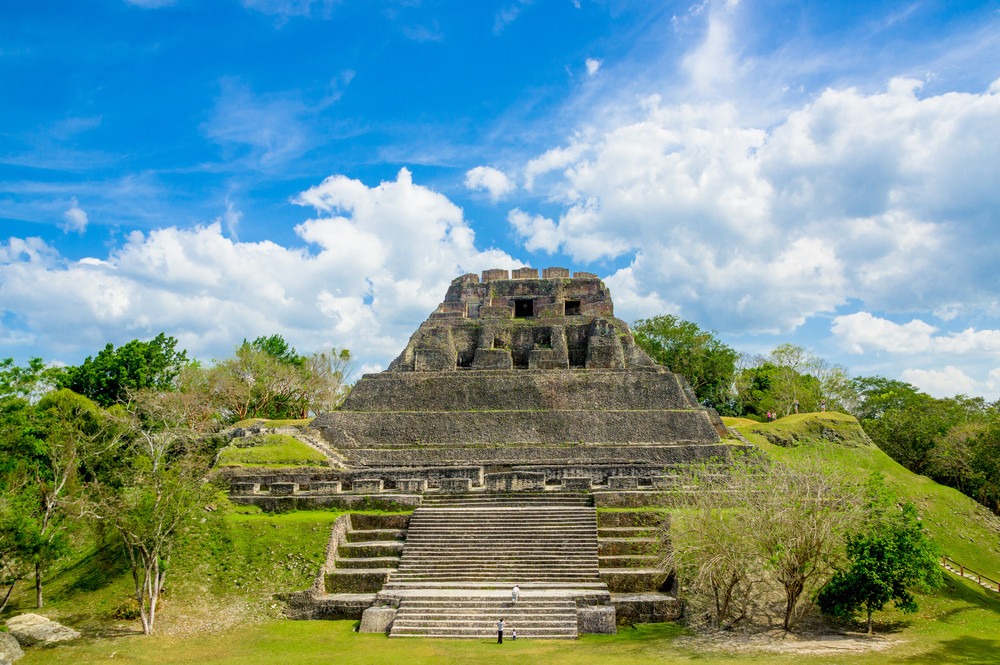
The bulldozing of Mayan ruins in Belize represents a catastrophic loss for the region, with far-reaching consequences that extend beyond the immediate physical destruction. This act jeopardizes not only the cultural heritage of the Mayan people but also the economic stability and future research opportunities in the area. The irreversible damage inflicted demands a thorough understanding of the multifaceted implications.The environmental impact of this destructive act is profound and multifaceted.
The bulldozing likely disrupted delicate ecosystems, potentially leading to soil erosion, loss of biodiversity, and altered water flow patterns. The immediate and long-term consequences for the surrounding environment are difficult to fully quantify but will certainly be substantial.
Environmental Consequences
The bulldozing of ancient Mayan sites inevitably disrupts the delicate balance of the local ecosystems. This destruction can lead to significant soil erosion, impacting the surrounding land’s fertility and water resources. The removal of vegetation cover can accelerate runoff, increasing the risk of flooding and sedimentation in nearby rivers and streams. Further, the loss of plant life and habitat directly impacts the biodiversity of the region, potentially endangering species dependent on the area.
In some cases, the disruption of the natural water table could lead to long-term water scarcity. The destruction of the ancient structures and associated ecosystems could trigger unforeseen and damaging chain reactions in the surrounding environments.
Cultural and Historical Impacts
The destruction of Mayan ruins carries a profound cultural and historical impact. These sites represent a tangible connection to the past, providing invaluable insights into the lives, beliefs, and societal structures of the ancient Mayan civilization. The bulldozing effectively erases this vital link to history, rendering irreplaceable information inaccessible to future generations. The act serves as a significant blow to the cultural identity of the region and the preservation of its rich heritage.
Belize is reportedly investigating the bulldozing of Mayan ruins, a truly disheartening development. Meanwhile, air travel disruptions are also making headlines, as Air China has halted its Beijing-Honolulu flights, air china halts beijing honolulu flights adding to the complexities of global travel. Hopefully, Belize’s investigation will shed light on this unfortunate incident and bring about justice.
This destruction is a violation of the fundamental rights of the Mayan people to their cultural heritage.
Legal Ramifications
The potential legal ramifications of the bulldozing are substantial and could involve international law. Depending on the specifics of the local laws and any international agreements related to cultural heritage preservation, the perpetrators could face criminal charges. Such legal proceedings could involve civil lawsuits brought by organizations dedicated to preserving cultural heritage. This could involve sanctions, fines, or even criminal prosecutions, depending on the nature of the violation.
Economic Losses
The destruction of Mayan ruins has significant economic implications for the region. Tourism plays a crucial role in Belize’s economy, and the sites are a major attraction for visitors interested in Mayan history and culture. The loss of these sites can directly impact tourism revenue, leading to job losses in related industries. The destruction can also hinder the growth of cultural tourism, a sector that could have provided substantial economic opportunities.
Long-Term Implications for Archaeological Research
The bulldozing of Mayan ruins has profound and lasting implications for archaeological research. The loss of these sites deprives researchers of crucial information about the ancient Mayan civilization. The destruction makes it impossible to study these sites for future generations, meaning that critical knowledge and insights into Mayan society are lost forever. Future generations of archaeologists will be unable to gain a deeper understanding of Mayan culture and history.
This loss of information sets a dangerous precedent for the preservation of other ancient sites worldwide.
Community and Public Response
The bulldozing of Mayan ruins sparked immediate and intense reactions from local communities, highlighting the deep-seated cultural and historical significance of the sites. Concerns ranged from the potential loss of irreplaceable heritage to the broader implications for cultural preservation in Belize. This section delves into the public response, including protests, statements, stakeholder involvement, and communication strategies employed during the investigation.
Community Reactions and Concerns
Local communities expressed deep concern and outrage over the destruction. Many viewed the incident as a grave violation of their cultural heritage and a threat to their identity. Oral histories, ancestral connections, and spiritual beliefs were intertwined with these sites, making the loss particularly painful. Fear over the potential for further destruction of historical sites and the erosion of cultural pride was widespread.
Belize is reportedly investigating the bulldozing of Mayan ruins, a truly disheartening development. Meanwhile, it’s great to see that Amsterdam’s De L’Europe, a beloved European venue, has reopened after renovations. Hopefully, this will inspire similar proactive steps in Belize to ensure the preservation of their rich cultural heritage, rather than the destruction of such important sites. Amsterdam’s De L’Europe reopens is a sign that even in the face of challenges, restoration and revitalization are possible.
The investigation into the bulldozing of Mayan ruins is crucial, and I hope it leads to justice and protection for these invaluable historical sites.
Protests and Demonstrations
Following the incident, several organized protests and demonstrations took place in and around the affected areas. These public displays of dissent involved various community members, ranging from traditional elders to younger generations, collectively advocating for the preservation of the historical sites. Participants utilized various forms of expression, including speeches, rallies, and symbolic actions, to voice their opposition. These actions demonstrated a strong commitment to preserving their cultural legacy.
Stakeholder Roles in Response
Various stakeholders played crucial roles in the community’s response. Local indigenous groups, government officials, cultural heritage organizations, and international conservation groups all actively participated in the protests and advocacy efforts. Government officials took the lead in coordinating the investigation, while indigenous groups mobilized their communities to raise awareness and protect their cultural heritage. These organizations often collaborated to provide resources, organize protests, and communicate with the public.
Methods of Communicating the Investigation to the Public
The investigation’s progress was communicated to the public through a combination of press releases, community meetings, and social media updates. The investigation team aimed to maintain transparency and provide regular updates on the progress of the investigation and the potential consequences of the incident. Public forums were established to address concerns and answer questions from community members. The government and investigating agencies used these methods to address public concerns.
Media Coverage Summary
Media coverage of the incident was extensive and varied in its approach. News outlets both in Belize and internationally reported on the bulldozing, protests, and the investigation. The diverse media coverage highlighted the significance of the incident and the strong community response. Some media focused on the legal and political aspects, while others emphasized the cultural and historical implications.
The media’s role was crucial in raising public awareness and driving support for the preservation of Belize’s cultural heritage.
International Relations and Cooperation: Belize Investigating The Bulldozing Of Mayan Ruins
The bulldozing of Mayan ruins in Belize has profound implications beyond the borders of the country. International scrutiny and cooperation are crucial to ensure proper investigation, preservation of cultural heritage, and potential accountability. The incident highlights the interconnectedness of global concerns regarding cultural heritage and the need for swift and effective international responses.The international community plays a pivotal role in responding to such incidents, providing expertise, resources, and support for investigations.
International organizations can offer technical assistance in archaeological assessments, legal expertise in international heritage protection, and facilitate collaborations between Belizean authorities and other nations. This multifaceted approach is essential to fully address the complexities of the situation.
Role of International Organizations
International organizations like UNESCO, Interpol, and the World Heritage Committee are instrumental in responding to such cultural heritage violations. UNESCO, with its mandate on cultural heritage, possesses expertise in assessing damage, facilitating investigations, and providing technical assistance. Interpol’s role in tracing the origin of the equipment used and potential perpetrators cannot be overlooked. The World Heritage Committee can initiate emergency measures and influence global support for preserving Belize’s cultural assets.
Potential for International Collaborations
International collaborations are essential for effectively investigating the incident. Belize can leverage the expertise of other countries with experience in archaeological investigations, forensic analysis, and international legal frameworks. Such partnerships could provide valuable insights into the nature and extent of the damage and aid in identifying perpetrators. Examples of successful international collaborations in similar incidents include the joint investigations into the looting of archaeological sites in other regions.
Support and Aid from International Bodies
Belize might receive technical assistance from international organizations. This assistance could include funding for archaeological assessments, expert consultations, or the development of preservation strategies. The specific form and extent of aid would depend on the severity of the damage and the specific needs identified by the Belizean authorities. For example, similar incidents in other countries have prompted international financial aid and expertise from organizations like the Getty Conservation Institute.
International Legal Frameworks
International legal frameworks, such as the UNESCO Convention concerning the Protection of the World Cultural and Natural Heritage, play a crucial role in safeguarding cultural heritage. This convention Artikels the obligations of signatory nations to protect their cultural heritage and cooperate internationally in its preservation. These international legal frameworks are essential tools in holding perpetrators accountable and fostering international cooperation in the protection of cultural heritage.
Comparison of International Responses to Similar Incidents
International responses to similar incidents vary based on the severity of the damage, the resources available, and the political climate. In some instances, swift and coordinated international actions have been undertaken, leading to the apprehension of perpetrators and the preservation of damaged sites. In other cases, responses have been delayed or insufficient, highlighting the need for stronger international frameworks and increased resources dedicated to safeguarding cultural heritage.
A thorough review of past incidents will offer valuable insights for a comprehensive response to the current situation in Belize.
Visual Representation of the Site
Unearthing the truth behind the bulldozing requires a meticulous examination of the site’s visual history. Historical photographs and illustrations offer crucial evidence, showcasing the extent of the destruction and providing a powerful narrative to support the investigation. Visual representations, whether photographic, artistic, or 3D, play a pivotal role in reconstructing the past and educating the public about the significance of the lost Mayan ruins.The investigation into the bulldozing of the Mayan ruins demands a comprehensive approach to visual documentation.
Visuals, beyond simply depicting the damage, serve as potent tools for understanding the context, the potential for future preservation efforts, and the impact on the community and the surrounding environment. By carefully examining both pre- and post-destruction imagery, the investigation gains invaluable insight into the incident.
Historical Photograph of the Site Before the Bulldozing
A pre-bulldozing photograph of the site would depict a rich tapestry of Mayan architecture, potentially showcasing intricate carvings, well-preserved structures, and surrounding vegetation. The photo could highlight the site’s integration into the natural environment, showing its harmonious relationship with the surrounding landscape. The image should clearly identify the specific structures and their positions within the larger site.
Descriptive Illustration of the Site After the Bulldozing, Belize investigating the bulldozing of mayan ruins
An illustration of the site after the bulldozing would show a stark contrast to the historical photograph. The illustration would depict the flattened landscape, highlighting the extent of the destruction. The image should accurately reflect the removal of structures and the disturbance of the site’s original contours. It should also indicate the precise locations of any remaining fragments or debris, contributing to the investigation’s reconstruction of the events.
Method to Present Visuals within a Table
A table can effectively showcase the changes between the pre- and post-destruction visuals. The table should present the two images side-by-side. A clear column header would distinguish the pre- and post-destruction images. A description column would detail the significant architectural features or elements in each image. An important column should note the changes in the features or elements, including the destruction of structures, removal of artifacts, and alterations in the landscape.
The table format will enable easy comparison and facilitate a clearer understanding of the extent of the damage.
Table of Visual Representations
| Type of Visual Representation | Description | Use in Investigation | Role in Raising Public Awareness |
|---|---|---|---|
| Historical Photograph | A photograph of the site before the bulldozing. | Provides a baseline for comparison and helps establish the site’s original state. | Visually compelling evidence of the site’s historical significance. |
| Illustration of the Site After Bulldozing | A detailed sketch of the site after the bulldozing. | Presents a visual record of the damage, highlighting specific structures lost. | A powerful illustration of the devastating impact of the destruction. |
| 3D Model of the Site | A digital model of the site. | Allows for virtual reconstruction and detailed analysis of the site’s structure. | Provides a compelling way for the public to experience the site virtually. |
The table above illustrates the varied types of visual representations used in the investigation, along with their respective roles in documenting the damage and raising public awareness. Different visual mediums offer unique perspectives and benefits to the investigation.
Final Wrap-Up
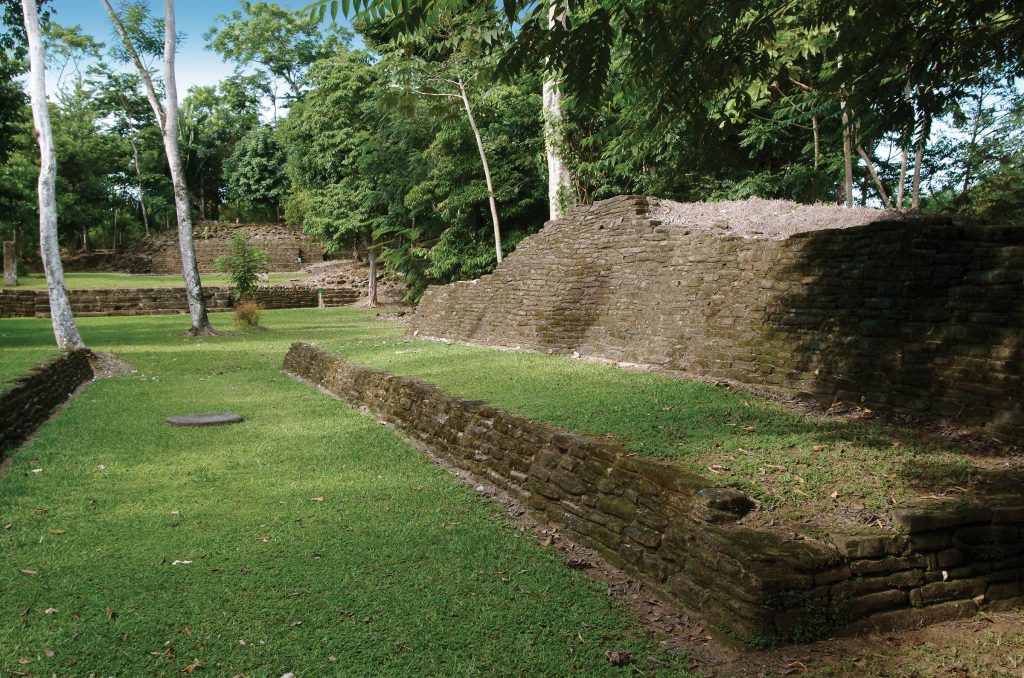
In conclusion, the investigation into the bulldozing of Mayan ruins in Belize is a critical step in safeguarding cultural heritage. The thoroughness of the investigation will determine the future of these sites and the lasting impact on Belizean history. The case serves as a cautionary tale, highlighting the vulnerability of archaeological sites and the importance of international cooperation in protecting such invaluable cultural treasures.
Question Bank
What are the potential motivations for the bulldozing?
Possible motivations range from land speculation to illicit resource extraction, and a deeper investigation will undoubtedly reveal the true causes.
What is the role of international organizations in this situation?
International organizations may provide technical expertise and resources to aid in the investigation and preservation efforts.
What methods are used to document the evidence?
Methods used for documenting evidence may include photography, detailed sketches, and 3D modeling. These methods help preserve the site’s condition for future analysis.
How can the public help support the investigation?
Public support is essential. Staying informed and supporting the preservation efforts of Belize is a crucial step. Public awareness can bring more attention and support to this significant case.

